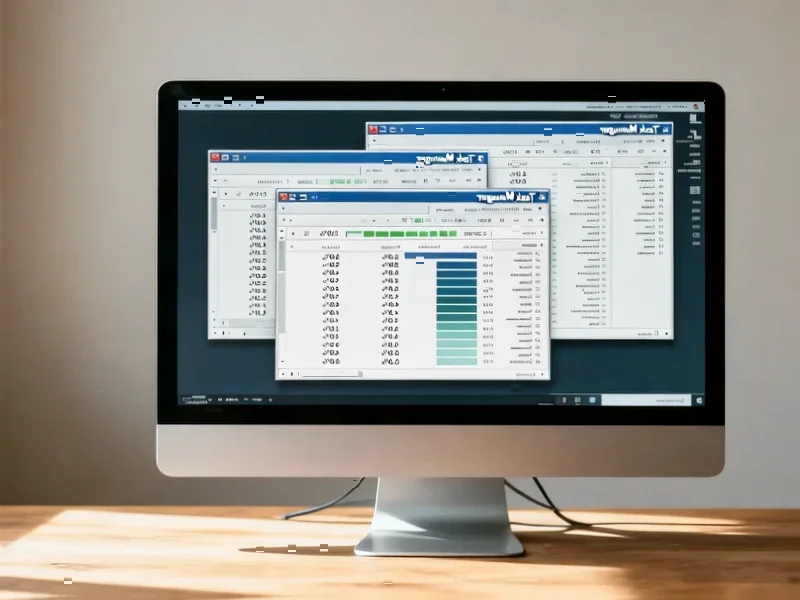According to ExtremeTech, YouTube has removed two videos from the CyberCPU Tech channel that demonstrated how to install Windows 11 without a Microsoft account or officially supported hardware. The platform flagged both tutorials under its “Harmful or dangerous content” policy and denied all appeals, with one appeal allegedly rejected in under a minute. Creator Rich, who has accumulated 300,000 subscribers over five years, confirmed the videos contained no piracy, hacking, or payment bypassing content, yet received a strike that could threaten his channel’s existence if two more occur within 90 days. Multiple reports indicate other Windows-related tutorial creators faced similar takedowns, though YouTube has remained silent on the specific cases. This situation reveals deeper platform governance challenges affecting educational content creators.
The Business Logic Behind Automated Moderation
YouTube’s reliance on automated content moderation represents a calculated business decision rather than a technical limitation. With over 500 hours of content uploaded every minute, human review at scale would be economically unsustainable. The platform’s algorithm prioritizes risk mitigation over content nuance, creating a system where false positives become acceptable collateral damage. What makes this case particularly concerning is the appeal process failure—when automated systems can’t distinguish between legitimate educational content and genuinely harmful material, the business model essentially sacrifices creator interests for platform protection. This creates a perverse incentive where YouTube benefits from over-enforcement while creators bear the costs of mistaken takedowns.
Microsoft’s Unspoken Platform Control Strategy
While no evidence directly links Microsoft to these takedowns, the pattern aligns with the company’s broader platform control strategy. Microsoft has increasingly positioned Windows 11 as a service rather than a product, with Microsoft Account integration becoming central to their ecosystem and data collection efforts. Tutorials demonstrating installation without accounts directly undermine this business model by enabling users to opt out of Microsoft’s service layer. The company has every incentive to discourage content that reduces their ability to track user behavior, deliver targeted advertising, and push subscription services. Even without formal requests, Microsoft’s partnership status with Google and their substantial advertising spend give them implicit influence over platform policies affecting their products.
The Economic Impact on Tech Education Creators
For creators like CyberCPU Tech, these takedowns represent more than temporary inconvenience—they threaten entire business models built around technical education. A channel with 300,000 subscribers represents significant investment in equipment, production time, and audience development. When platforms can remove content without transparent justification, creators face impossible decisions about which topics remain “safe” for investment. This particular installation guide and similar technical tutorials often generate substantial watch time and algorithm favor due to their practical utility, making their removal economically damaging beyond the immediate content loss. The uncertainty forces creators to diversify to platforms like Floatplane and Rumble, but these alternatives lack YouTube’s monetization infrastructure and audience reach.
The Transparency Crisis in Platform Governance
What makes this situation particularly troubling is the complete lack of transparency in YouTube’s decision-making process. When educational content about standard operating system installation falls under “harmful or dangerous” policies without clear explanation, it suggests either profoundly broken classification systems or undisclosed policy influences. The speed of appeal rejections—reportedly under one minute—indicates either fully automated appeal processes or human reviewers working under impossible time constraints. Neither scenario inspires confidence in the system’s ability to distinguish between genuinely harmful content and legitimate technical education. This creates a chilling effect where creators self-censor not because content violates policies, but because they can’t predict what the algorithm might misinterpret.
Broader Implications for Technical Content
These takedowns signal a worrying trend for technical education across major platforms. If standard operating system installation tutorials become categorized as “harmful,” where does the line get drawn for other technical content? Content about custom ROM installation on Android devices, jailbreaking tutorials, or even basic programming concepts that could theoretically be misused might face similar scrutiny. The fundamental problem lies in platforms applying consumer protection policies to professional and educational content without accounting for context. As platforms increasingly serve both casual consumers and professional communities, their one-size-fits-all moderation approaches create inevitable conflicts that disadvantage specialized content creators who serve important educational functions.




